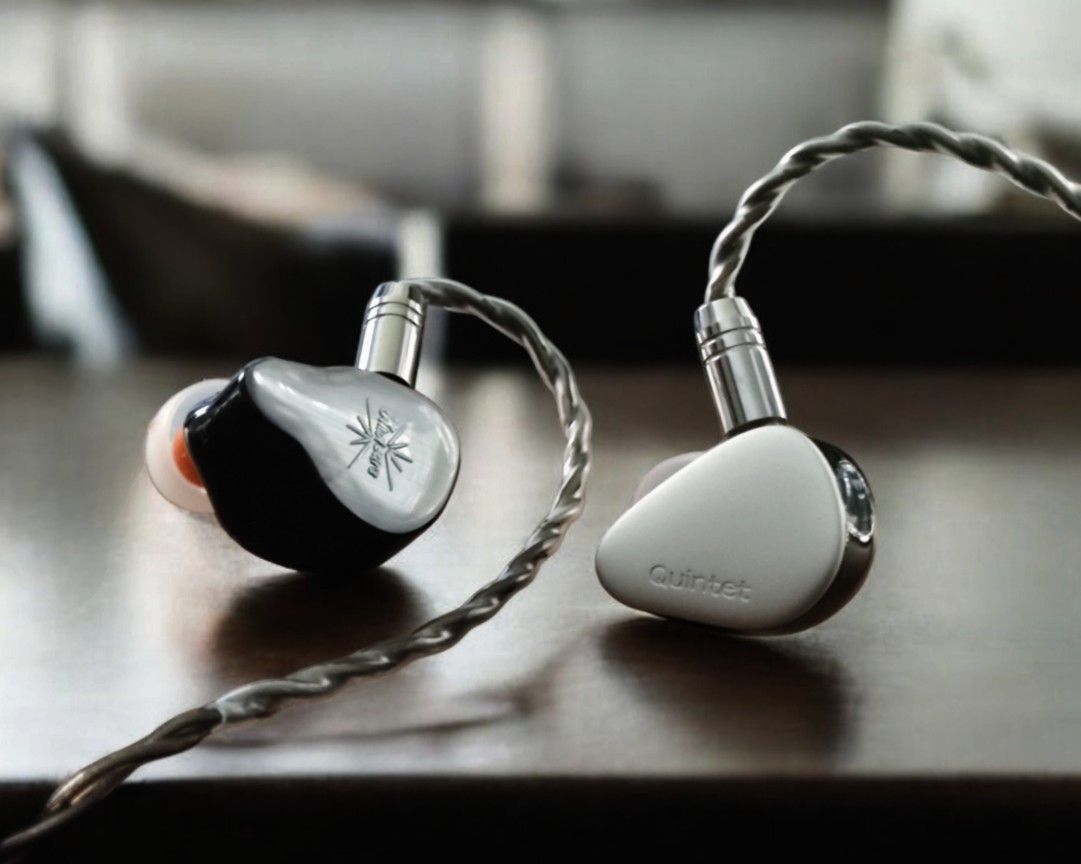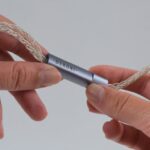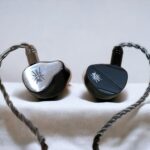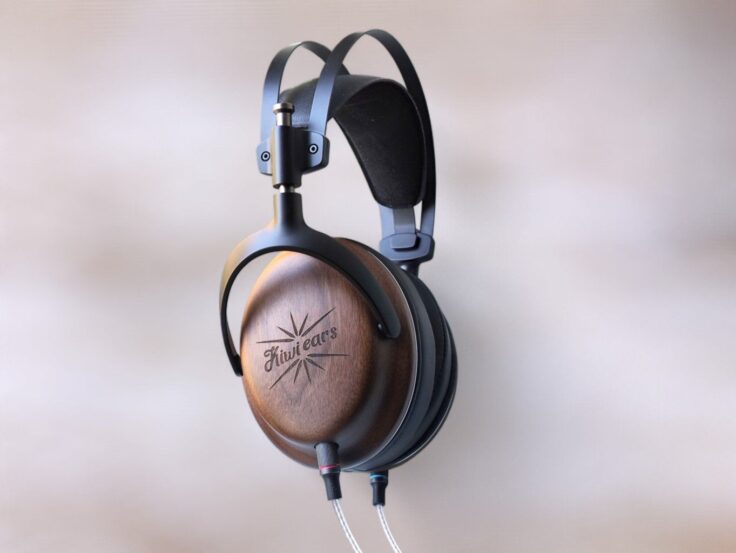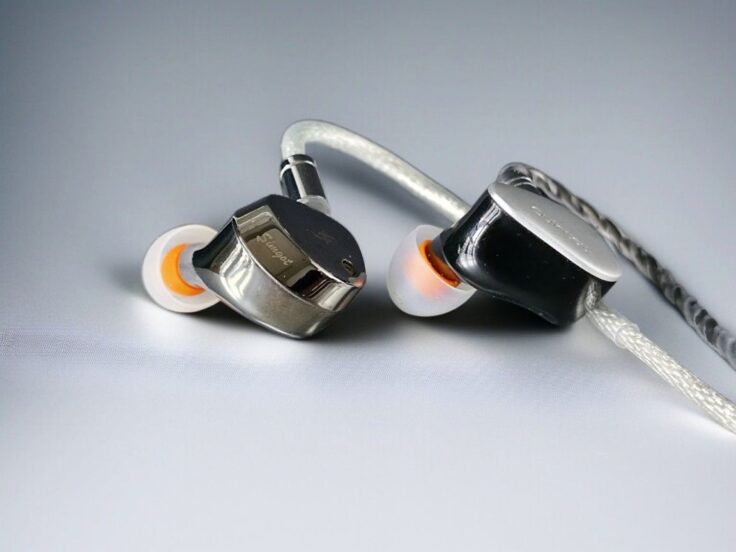The KE4 is a brand new hybrid driver IEM from Kiwi Ears. It utilizes a dual 10 mm dynamic driver for the bass, a balanced armature driver for the mids and lower highs, and a dedicated balanced armature tweeter for the higher frequencies.
The Kiwi Ears Quintet is also a multi-driver hybrid IEM. However, where the KE4 runs with a double dynamic driver and two balanced armatures, the Quintet combines a single dynamic driver with a planar magnetic driver, two balanced armatures, and even a piezoelectric bone conductor.
The build and look of the KE4 and the Quintet are very similar. Both are made out of 3D-printed resin. The KE4 has a more “universal-custom” type design. The Quintet has a metal faceplate, the KE4 is all resin, but they share the same color scheme in black and silver/light gray. The cable is identical.
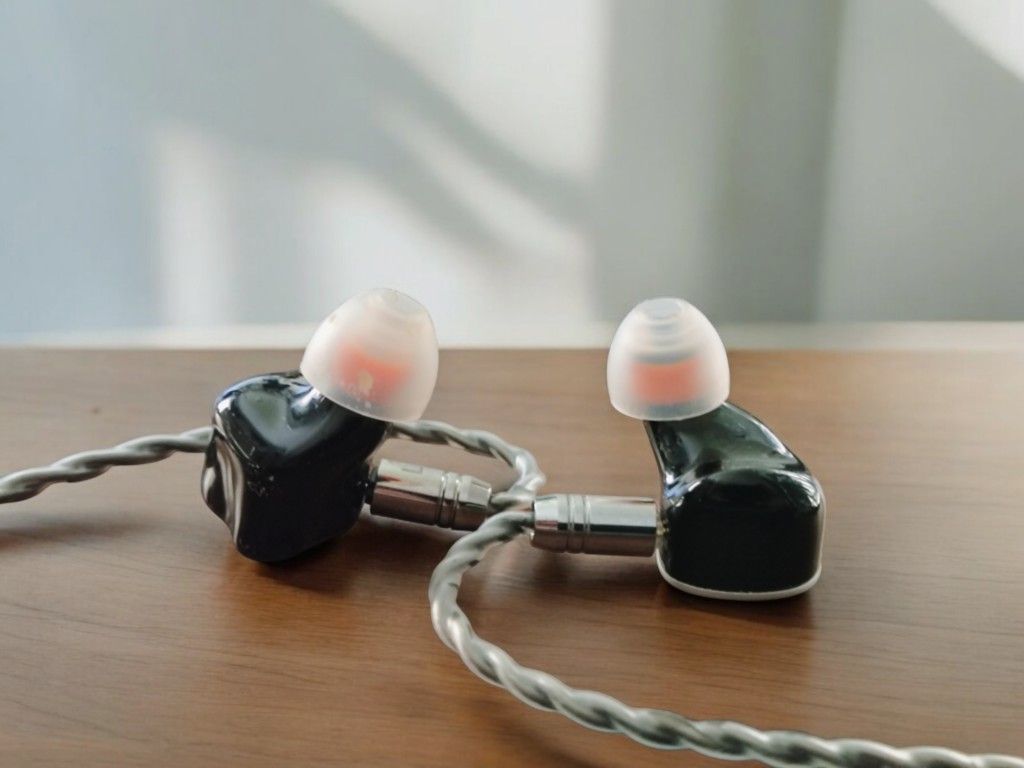
KIWI EARS KE4 SPECIFICATIONS
- Drivers configuration: 2DD + 2BA
- Sensitivity: 102 dB (±1dB)
- Impedance: 28 ohm
- Bass: dual dynamic driver.
- Midrange and lower treble: customized RAB-32257 balanced armature driver
- High treble: Knowles RAD-33518 balanced armature driver
- Crossover: 3-Way Crossover Network
- Included cable: 1.2 m detachable silver-plated OFC cable
- Cable termination: 3.5mm TRS jack
- IEM connectors: 0.78mm, 2 Pin
Check the current price here:
- Linsoul: Kiwi Ears KE4
- Amazon: Kiwi Ears KE4
KIWI EARS QUINTET SPECIFICATIONS
- Drivers: 1 diamond-like carbon (DLC) dynamic driver, 2 balanced armature (BA) drivers, 1 planar magnetic driver, and 1 piezoelectric (PZT) bone conductor
- Impedance: 32 Ohms
- Sensitivity: 106 dB
- Included cable: 1.2 m detachable silver-plated OFC cable
- Cable termination: 3.5mm TRS jack
- IEM connectors: 0.78mm, 2 Pin
My review of the Quintet can be found here.
Check the current price here:
- Linsoul: Kiwi Quintet
- Amazon: Kiwi Quintet
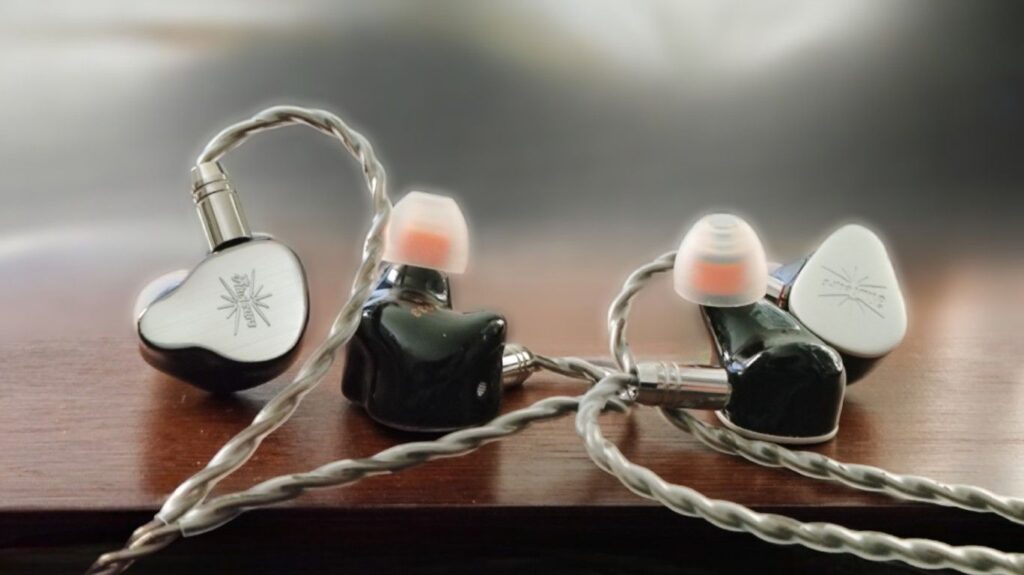
COMPARISONS
Associated equipment: I used the Topping A90 as an amplifier and the RME ADI-2 DAC FS as a source. Both pairs had the Spinfit CP145 tips mounted.
Here are my track-by-track impressions:
Fading Sorrow by Marcin Wasilewski Trio
This has become one of my most-listened-to jazz trio pieces. The KE4 renders it delicately and nuanced, in a very effortless and easy-flowing manner. It is very enjoyable. The imaging is very good, especially the sense of depth.
The Quintet is quite similar in most respects, but it sounds a bit crisper and drier. The differences are not very large, and they are clearly tuned similarly, but the KE4 is more organic and liquid sounding.
Tide of Trepidation by EST
Another jazz trio track that sounds delicious on the KE4. It is natural and smooth, organic, and effortlessly detailed. The bass is quite present but nicely controlled.
Again, the Quintet sounds similar, but crisper and drier. It also has a good bass, but not as pronounced as the KE4. The Quintet might come off as having a larger sound stage, but the imaging is not as deep sounding. There is also more treble energy with the Quintet.
Summer 3 Vivaldi Recomposed by Max Richter
The two are noticeably different. The Quintet has a crisper, brighter, and drier sound, while the KE4 offers a darker, thicker tone. Both sound great and are enjoyable, but if I were to be extra picky, a mix between the two would be ideal.
Young Vivaldi Violin Concerto RV 820 by Modo Antiquo
They are less different here, but the Quintet still is crisper and brighter. They are equally detailed, and the soundstage and imaging are comparable.
It Could Be Sweet by Portishead
Also here, they’re similar but with the same differences as before. The KE4 is darker, warmer, and slightly thicker sounding. The Quintet is brighter, crisper, and slightly more airy. In terms of detail retrieval and imaging capabilities, they are comparable.
Escape Route by Boris Blank
The difference in tonality and general character make different details stand out when comparing the two, but in total I feel they’re equally good, with the same main differences as before.
Almost Like the Blues by Leonard Cohen
The bass of the KE4 is notably different, it’s more coloured than the bass of Quintet, darker and thicker in a way, but not more voluminous. The vocals of the KE4 sound fuller and more organic, but the Quintet is doing nothing wrong.
Black Crow by Cassandra Wilson
The KE4 sounds very nice. It’s organic, slightly warm, and a bit dark. Again, the sense of image depth is noteworthy.
With the Quintet, the vocals brighten up, the soundstage widens. The sense of depth isn’t as big, relatively speaking, but the soundstage is bigger in total. I attribute this to the generally brighter presentation.
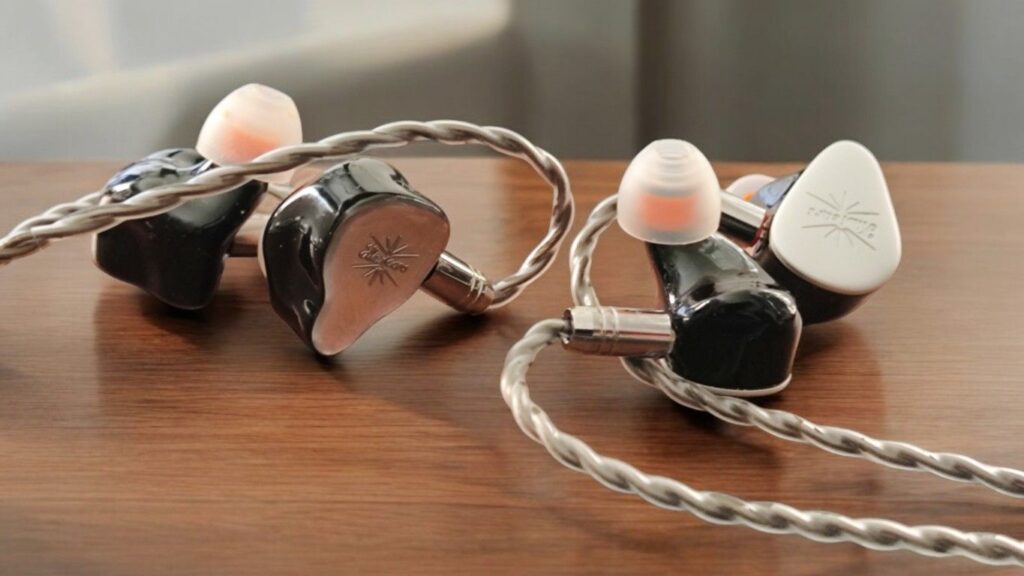
WRAPPING IT UP
Sound Signature
Both the KE4 and the Quintet are quite neutrally tuned. However, I would call the Quintet slightly more neutral. The KE4 has slightly more bass, and it’s a bit dark darker.
Treble
Both have very good treble detail and articulation. The KE4 has a more organic, smoother treble presentation, the Quintet is drier and crisper.
Midrange
The Quintet has the brighter mid-range presentation, with more energy in the upper mids. The KE4 is darker and not as crisp. Again, the Quintet sounds drier.
Bass
They both have a great bass with good definition and extension. I find the Quintet to sound the most neutral in the lowest regions; the KE4 has a warmer, thicker tone to it, although the quantity is mostly similar, varying a bit between tracks because of differences in the frequency response.
Soundstage and Imaging
Primarily because of its brighter presentation, the Quintet has a somewhat larger soundstage. The soundstage of the KE4 is slightly more intimate, but it has excellent soundstage depth, better than the Quintet.
That being said, they are in the same ballpark, together with most good IEMs.
Detail, Dynamics, and Timbre
The general detail level of the two is comparable. The Quintet has crisper detail, the KE4 smoother. Macrodynamics and microdynamics are great with both.
When it comes to timbre, the Quintet is drier and crisper all along the frequency spectrum, and the KE4 is fuller, smoother, and more organic sounding.
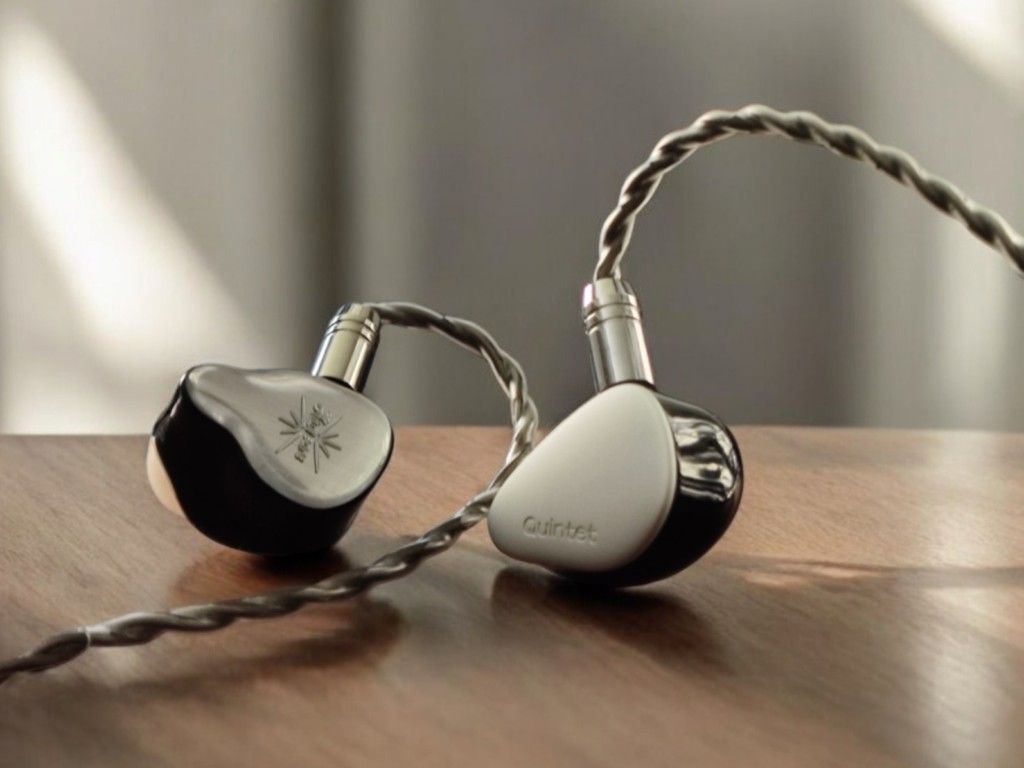
CONCLUSION
The Quintet has become a reference in its price range, and the KE4 is not inferior. They’re different flavours, generally very similar but variations catering to different preferences rather than a difference in objective sound quality.
.
Thanks for reading. You can support us by purchasing literally anything using any of our affiliate links, e.g., one of these:
- Linsoul: Kiwi Ears KE4
- Amazon: Kiwi Ears KE4
- Linsoul: Kiwi Quintet
- Amazon: Kiwi Quintet


